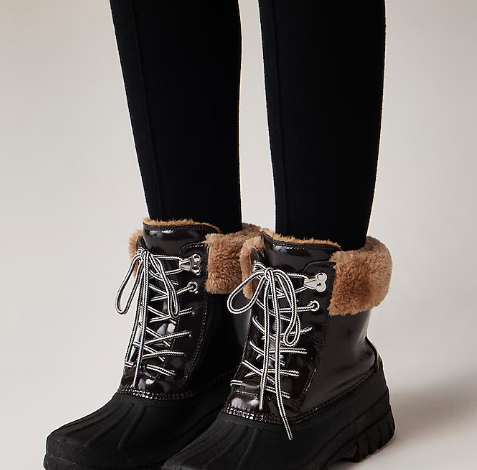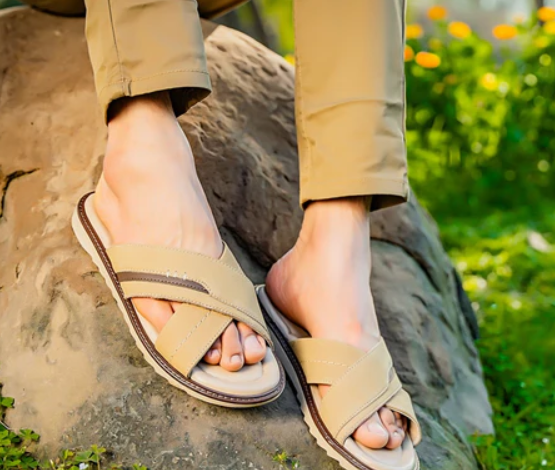How to Shop for the Perfect Winter Boots in Canada

When winter hits in Canada, it’s not just about staying warm—it’s about staying comfortable and stylish while braving the cold, snow, and ice. The right pair of winter boots is essential for tackling the harsh Canadian winter, whether you’re facing icy sidewalks, deep snowdrifts, or slushy streets. Here’s a guide to help you find the perfect winter boots that will keep your feet cozy and protected all season long.
1. Understand Your Winter Environment
Canadian winters vary depending on where you live, so the type of winter boots you need will depend on your specific environment. Coastal areas like Vancouver have milder winters with more rain, so waterproof boots with good traction are essential. In the colder Prairies, insulation is key to handling extremely low temperatures. For cities like Ontario or Quebec, which experience a mix of snow, rain, and slush, a versatile boot that is both waterproof and insulated is ideal.
Think about your daily winter activities—whether you’re commuting, shoveling snow, or hiking through snowy paths. Understanding your needs will help narrow down your options.
2. Prioritize Warmth and Insulation
In Canada, warmth is a top priority when choosing winter boots. Look for boots with insulation like Thinsulate, PrimaLoft, or shearling lining. These materials trap heat and allow moisture to escape, keeping your feet warm and dry.
Boots come with temperature ratings like “-20°C” or “-40°C,” but keep in mind that these can vary between brands. Use these ratings as a guideline, but take into account personal factors like circulation or how active you are. If you tend to feel cold easily, choose a boot rated for lower temperatures than you expect.
3. Ensure Waterproofing
Waterproof boots are non-negotiable for Canadian winters. Wet feet can quickly lead to discomfort, so look for boots made with waterproof materials like Gore-Tex or rubber, which create an effective moisture barrier. If you frequently walk through slush, make sure the seams are sealed to prevent water from getting in.
Remember, water-resistant boots aren’t the same as waterproof boots. Water-resistant boots can handle light snow, but they won’t stand up to heavy rain or deep snow.
4. Focus on Traction and Soles
Icy conditions make good traction essential. Winter boots should have outsoles made from rubber or similar materials that offer a firm grip on slippery surfaces. Boots with deep treads or anti-slip technology provide extra stability, reducing the risk of slipping.
Some models also feature retractable cleats or designs that allow you to add crampons, which are especially useful if you live in areas prone to ice storms or if you do a lot of outdoor winter activities.
5. Test for Comfort and Fit
A great pair of winter boots should fit well and feel comfortable all day. When trying on boots, wear the type of socks you’ll wear in winter, like thick wool or thermal socks. Ensure there’s enough room for your toes to move, but not so much room that your foot slides around. A snug fit will help maintain warmth and prevent blisters.
Consider ankle support and cushioning, especially for longer days outside. Boots with a padded collar and supportive midsole are more comfortable and provide better support.
6. Blend Style and Function
While practicality is key, style matters too. Thankfully, many winter boot brands offer options that are both functional and fashionable. Whether you prefer a sleek urban look or a rugged outdoor style, there’s a boot to match your personal taste.
Popular Canadian brands like Sorel, Kamik, and Pajar specialize in boots that balance durability with style. International brands like Columbia and Merrell also offer excellent winter footwear. Choose a color and style that complements your wardrobe, but make sure you don’t compromise on essential features like warmth and waterproofing.
7. Budget Smartly
Winter boots are an investment, but they don’t have to break the bank. High-quality boots typically range from $150 to $300, depending on materials and features. While cheaper options may seem appealing, they often lack the durability and comfort of higher-end boots.
Look for sales during the fall or early winter, and consider outlet stores or online shops for discounts. Some retailers also offer warranties, which can be a bonus if you plan to wear the boots for several seasons.
8. Maintain Your Winter Boots
To ensure your boots last for many winters to come, proper care is important. Use a waterproofing spray to enhance their moisture resistance, and clean them regularly to remove salt stains and dirt. When not in use, store them in a cool, dry place to avoid damage. For added warmth and comfort, consider adding insoles or liners.
Conclusion
When it comes to winter boots, it’s about finding the right balance of warmth, waterproofing, traction, and style. By considering your environment, testing for comfort, and investing in quality, you can confidently face Canada’s harsh winter conditions. With the right pair of boots, your feet will stay warm and dry, making your winter adventures more enjoyable.





